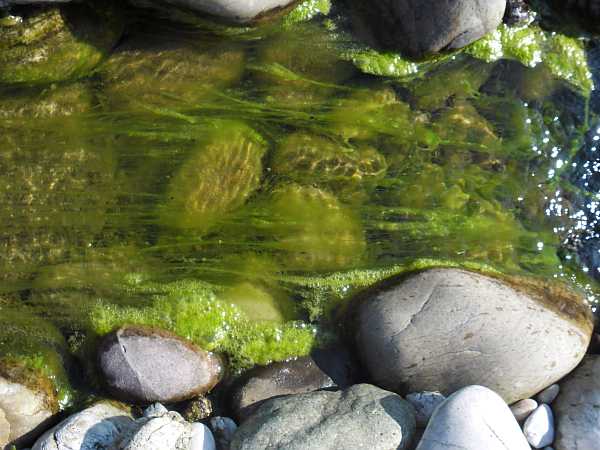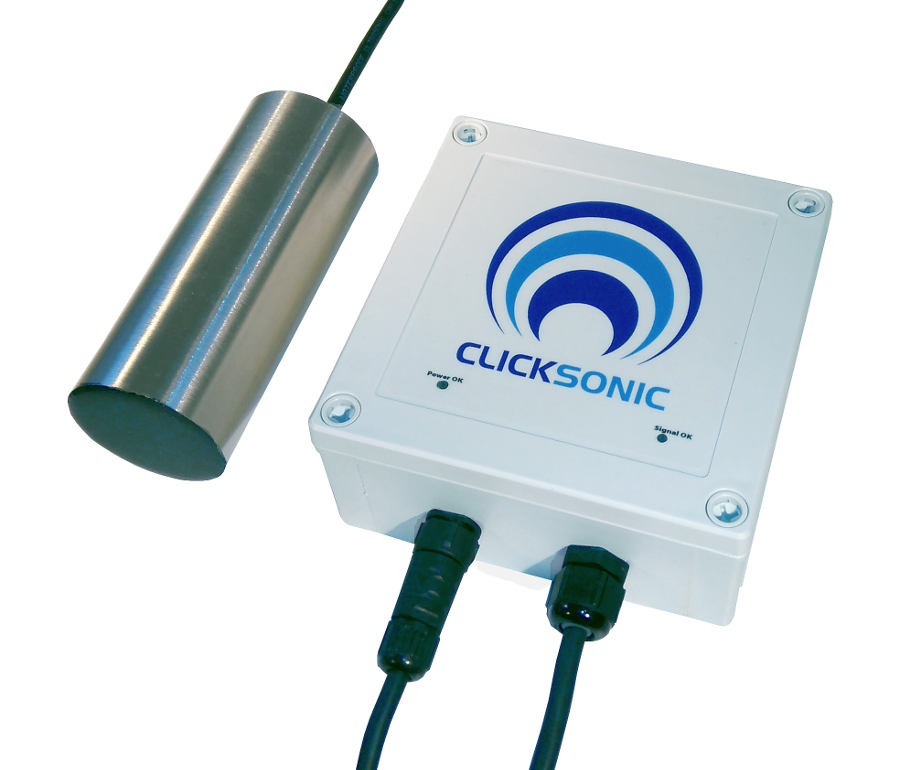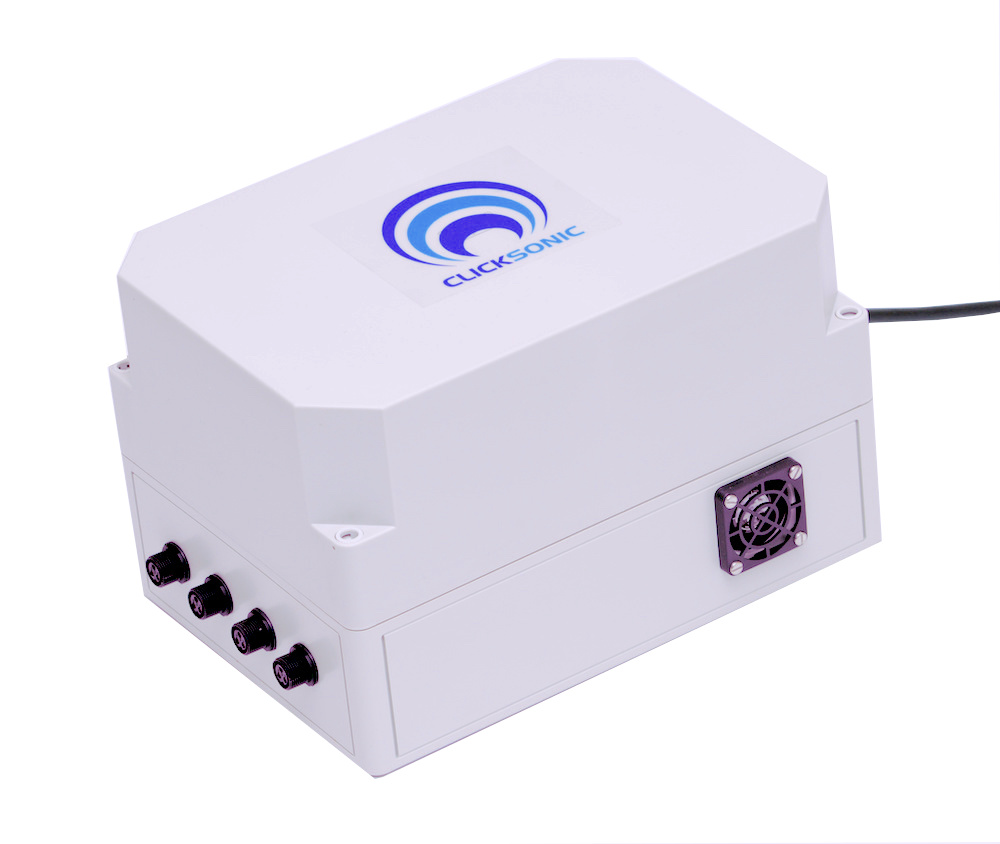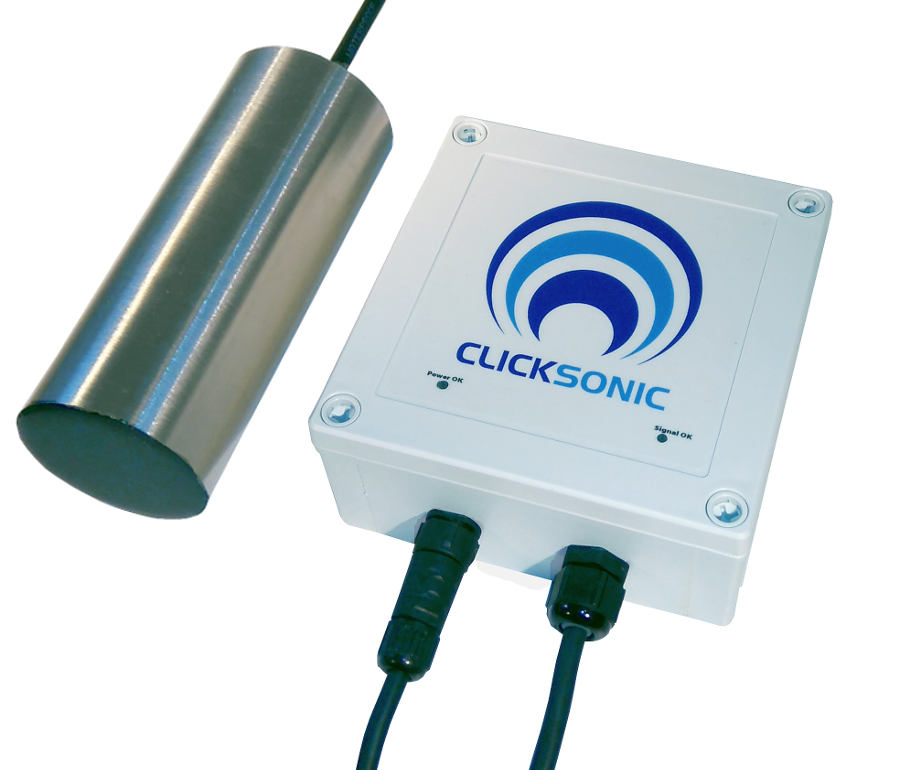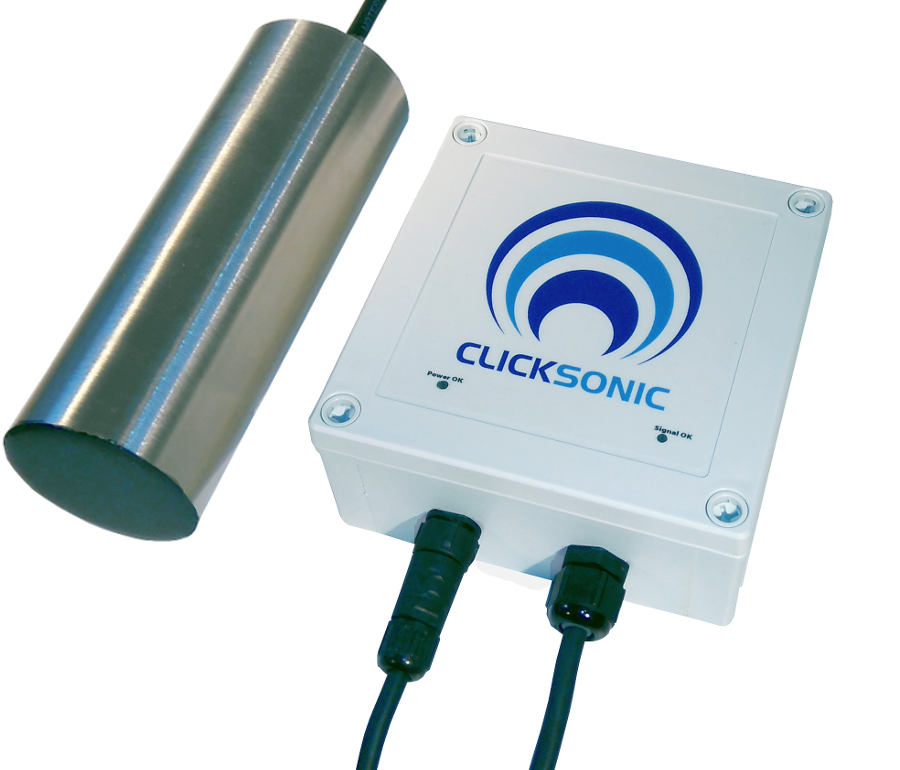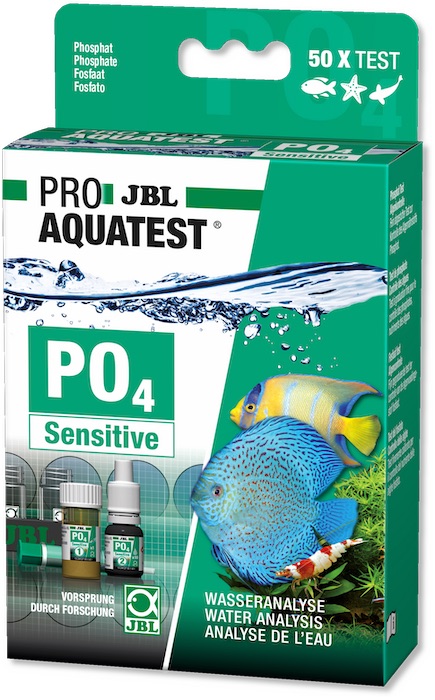In geschlossenen Systemen wie einem Gartenteich ohne Zu-
und Ablauf gelangt Phosphat vor allem aus überdüngten Gartenbereichen, um
den Teich herum ins Wasser, wie z.B. durch Einspülen von Rasendünger bei starken Regenfällen.
Alternativ kann Phosphat auch durch den
Abbau von Futterresten, abgestorbenen Tieren und Pflanzenteilen
freigesetzt werden. Im Wasser existiert Phosphat in drei verschiedenen
Formen: als gelöstes anorganisches Phosphat (Orthophosphat), als
organisch gelöstes Polyphosphat und als an partikuläre Biomasse
gebundenes Phosphat im Detritus und in den Organismen.
Phosphat in Biotopen, Naturteichen
Wenn Pflanzen und Tiere sterben und auf den Teichgrund
sinken, gelangt nur ein Teil des gebundenen Phosphats in das
Teichsediment. Der grösste Teil des freigesetzten Phosphats wird als
gelöstes Phosphat von Pflanzen und Tieren wieder ins Wasser
ausgeschieden und sofort von den Primärproduzenten aufgenommen.
Die Menge an Eisen (Fe) und gelöstem Sauerstoff (O2) in den unteren
Wasserschichten und im Teichsediment beeinflusst die Wirkung des
sinkenden Phosphats. Wenn ausreichend gelöster Sauerstoff vorhanden ist,
lagert sich das Phosphat an Sedimentteilchen an oder fällt als
unlösliches Eisen(III)hydroxyphosphat aus.
Wenn sich im Teichsediment sauerstofffreie Zonen bilden und Faulschlamm
entsteht, erfolgt die Reduktion von dreiwertigem Eisen (Fe3) zu
zweiwertigem Eisen (Fe2), wodurch das Phosphat wieder freigesetzt wird.
Selbst in diesem Stadium gelangt das Phosphat nicht unmittelbar in die
Freiwasserzone des Teiches.
Das Wasser, das direkt über dem
Teichsediment steht und noch einige Milligramm gelösten Sauerstoff
enthält, bildet eine Art Barriere durch die obere Sedimentschicht.
Dadurch werden die freigesetzten Phosphationen zurück ins Sediment
gezogen.
Die Remobilisierung des Phosphats tritt erst bei einer
Sauerstoffsättigung von weniger als 10% ein. Sinkt der Sauerstoffgehalt
unter <5 mg pro Liter, kommt es zu einer explosionsartigen
Freisetzung und der gefürchteten Massenvermehrung der Algen.
Auch wenn ausreichend Sauerstoff in den unteren Wasserschichten
vorhanden ist, gelangt das Phosphat nur dann nicht aus dem Teichsediment
ins freie Wasser, wenn Mulm, Detritus und Schlamm nicht aufgewirbelt
werden. Dies ist besonders wichtig, da das Durchwühlen des Teichbodens
durch Fische wie Schleien, Goldfische und Koi zur Suche nach Nahrung zu
erhöhten Problemen führen kann.
Phosphatentferner, Phosphatbinder

Es wird unterschieden von flüssigen Bindemittel -
PO4 Phosphatbinder, Phosphatentfernern, meist auf der Basis von Lanthan, ein chemisches Element der Übergangsmetalle.
Feste Binder, Phosphatbinder (PhosFort, PhosSorb, PhosBinder, usw.) sind mineralische Phosphate, bindende Granulate meist auf der Basis von harten Chemikalen, Bentonit, Zeolith sowie Eisenverbindungen und Eisenoxydbasis.
Sogenante Phosphate binden - Algen entfernen Produkte, Turbo PhosphatBinder garantieren für den schnellen Abbau von extrem hohen Nährstoffkonzentrationen. Die Turbo Phosphatmittel reduzieren algenbegünstigende Phosphate im Teichwasser auf ein gesundes Mass und beugen den Algenbefall wirksam vor. Diese Werbeverprechungen binden auch für den häufigen Gebrauch von den sogenannten harten Chemikalien.
Häufigste Anwendung: Der Phosphatbinder wird auf die Wasseroberfläche verteilt, das Wasser wird kurz darauf milchig. Am nächsten Tag ist der ganze Boden weiss und eine Teichreinigung steht an.
Voraussetzungen für den Erfolg von Phosphatbindemitteln ist ein Filtersystem, sowie keine Phosphatquellen, z.B. von Grund-, Quell oder Oberflächenwasser.
Hinweis: Bei Phosphatentferner und Phosphatbinder kann die toxische Grenze für Lebewesen, inkl. Mikroorganism im Wasser schnell erreicht werden und die Untergrenze fürs Überleben erreicht werden.
Tipp & Fazit:
Wir empfehlen die
manuelle Teichreinigung mit dem Schlammsauger, Poolroboter, um die gebunden Nährstoffe, wie Algen & Sedimente auf natürlichem Weg aus dem Wasser zu entziehen, sowie die
natürliche Algenbekämpfung mit effektiven Klicks.
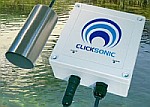
Sind die Phosphatwerte im
normalen Bereich (< 0.3mg/L), können die Algen in Schach gehalten werden mit der
intelligenten
G-Sonic Klick-Technologie "Klick für Klick klares Wasser". Auch bestehende Algen sterben chemiefrei, durch die erzeugten Resonanzschwingungen, ganz natürlich ab.







